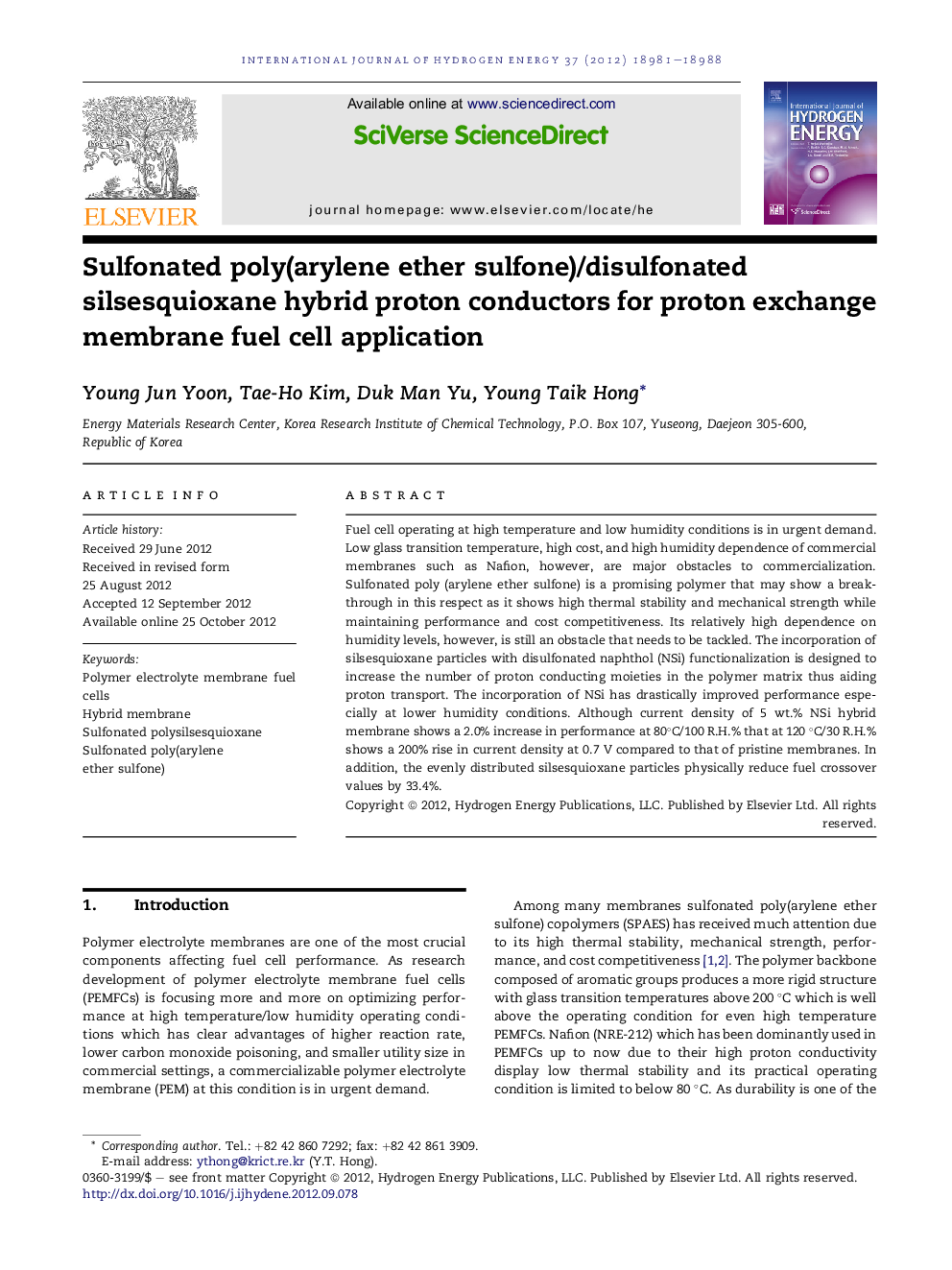| Article ID | Journal | Published Year | Pages | File Type |
|---|---|---|---|---|
| 1276104 | International Journal of Hydrogen Energy | 2012 | 8 Pages |
Fuel cell operating at high temperature and low humidity conditions is in urgent demand. Low glass transition temperature, high cost, and high humidity dependence of commercial membranes such as Nafion, however, are major obstacles to commercialization. Sulfonated poly (arylene ether sulfone) is a promising polymer that may show a breakthrough in this respect as it shows high thermal stability and mechanical strength while maintaining performance and cost competitiveness. Its relatively high dependence on humidity levels, however, is still an obstacle that needs to be tackled. The incorporation of silsesquioxane particles with disulfonated naphthol (NSi) functionalization is designed to increase the number of proton conducting moieties in the polymer matrix thus aiding proton transport. The incorporation of NSi has drastically improved performance especially at lower humidity conditions. Although current density of 5 wt.% NSi hybrid membrane shows a 2.0% increase in performance at 80°C/100 R.H.% that at 120 °C/30 R.H.% shows a 200% rise in current density at 0.7 V compared to that of pristine membranes. In addition, the evenly distributed silsesquioxane particles physically reduce fuel crossover values by 33.4%.
► A novel silsesquioxane material with disulfonated naphthol groups were synthesized. ► 5 wt.% NSi shows smaller humidity dependence than pristine membranes at 120 °C. ► 5 wt.% NSi membrane shows a 200% rise in current density at 120°C/30R.H.%. ► 5 wt.% NSi membrane shows a 33.4% reduction in fuel crossover.
